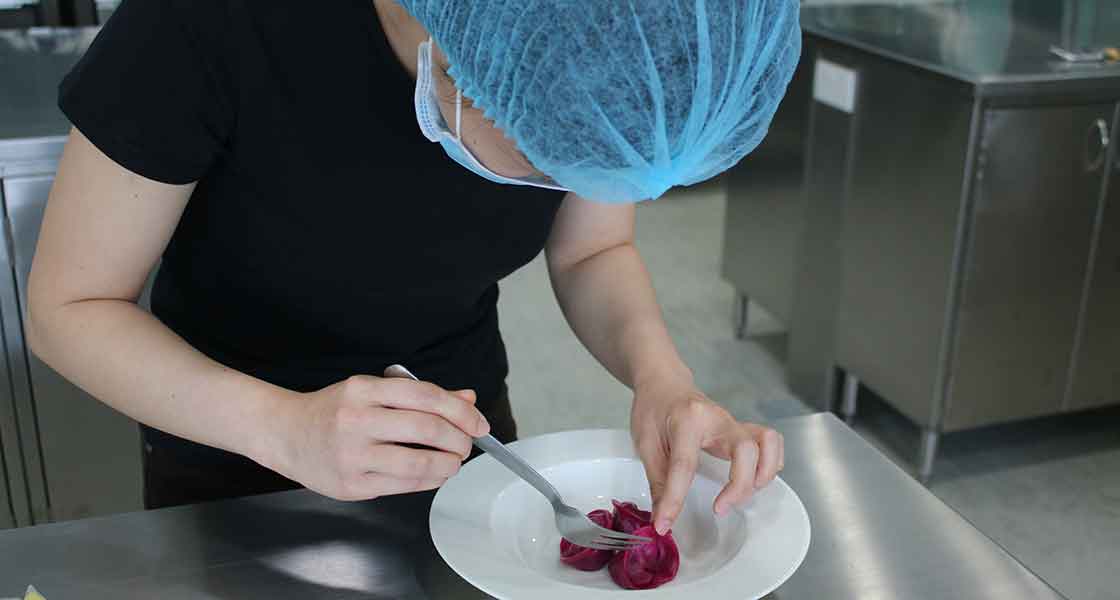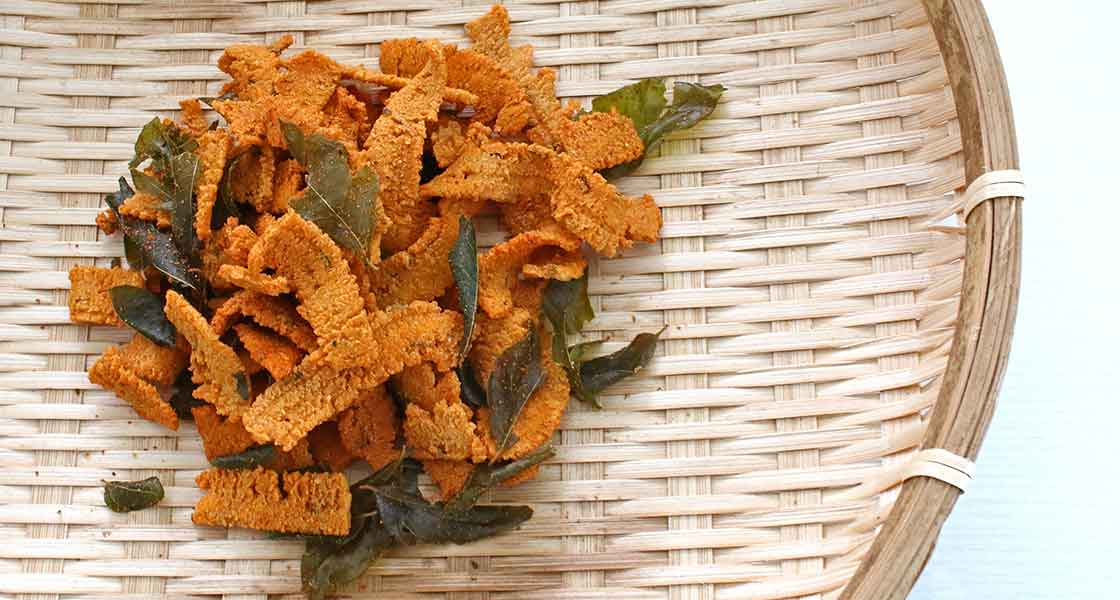Bambara to Moringa: Recipes for Underutilized Crops
CULINARY POINT OF VIEW
Armed with degrees in food science and patisserie, Xin Lin Tan’s skillset is well suited for her job as food technology manager for Crops For the Future (CFF). Working at an organization whose mission is to develop solutions that diversify agriculture using underutilized crops, Tan’s main role is to create new products with ingredients such as bambara groundnut and moringa. Tan talked to Food Technology about the challenges she faces to create salable products with ingredients most consumers have never heard of before.

Q: What made you decide to pursue your certificate in Patisserie after getting your BSc in food science?
Xin Lin Tan: I have always enjoyed eating baked goods—be it breads, cakes, cookies, pastries or desserts—but it had never occurred to me to pursue a full-time patisserie course. While I was working toward my BSc degree, I was particularly interested in baking science. I chose to join an international commercial bakery for my internship, where I got a first glimpse of how flour can be turned into a well-developed dough, how the dough expands during proofing, and how it is then baked in an oven. After that, I became a self-taught home baker, reading other articles on the internet and I was content with the foods I produced in my kitchen.
After graduation, I joined a local commercial bakery where I worked with professional chefs and bakers to develop new products. I was impressed by their skills and knowledge, and I realized that the theories I learned in university and the small experiments I conducted in my kitchen weren’t enough. I wanted to learn more, so I was decided to embark on a journey to become a pastry chef.
Q: How has your food science and culinary background prepared you for your role at CFF?
Tan:My food science degree equipped me with the fundamental theories and knowledge about food, while my exposure to the commercial kitchen has helped me work more systematically in the product development lab. Being a research organization, things often need to be done in a scientific way at CFF. For example, when I was developing moringa noodles, we had to add different concentrations of moringa to the noodles and then run sensory evaluation for each concentration to determine consumer preferences. Only then could we decide on the final product formulation.
Also, there are occasions where I am assigned to develop, prepare, and lead the team to serve foods—and full course meals on a few occasions—to various diplomats. This has included the British High Commissioner to Malaysia, Australian High Commissioner to Malaysia, and Ambassador of High Commission of Uganda, in addition to delegates from the Food Agriculture Organization (FAO) and Women of the Future. The highlight of my tenure with CFF has been to prepare and display a full range of products developed using underutilized crops to HRH Prince of Wales, Prince Charles during his visit to Malaysia. If it wasn’t for my culinary background, I would have had a much harder time completing those tasks.

Q: What are the most important qualities that you must keep in mind when developing products from these crops?
Tan: Consumer acceptance is one of the key factors in promoting underutilized crops. As these crops are unknown to most consumers, I believe that the product’s first impression—its appearance and palatability—is vital. As far as its appearance goes, I haven’t encountered problems with the bambara groundnut, since the flour milled from the nuts has a creamy color and is barely noticeable when added to a product. However, products made with moringa leaf powder carry a green hue, which might imply that the product will taste like grass—or broccoli to some—and might deter many at first sight. That’s when we rely on palatability to convince the tasters.
To encourage people to try the food, I develop a variety of products—from sweet to savory; Western flavors to ones suited for Malaysian taste buds; light snacks to dishes that can be served during meals—each targeting a different audience. Also, I incorporate underutilized crops into familiar food products such as replacing rice flour and lentil flour with bambara groundnut flour in making murukku—a popular deep fried, savory snack consumed in India and Malaysia. Or, I might substitute wheat flour with bambara groundnut flour in making biscotti. I have also incorporated moringa leaf powder into shortbread cookie recipes [see recipe below]. People are more willing to try foods they are familiar with, and upon tasting they may realize that the products made from underutilized crops don’t taste that different from their counterparts.
Nutritional quality is the other major element to keep in mind when I develop food products. It is CFF’s mission to promote underutilized crops to diversify the community diet, so we strive to increase the availability of more affordable and nutritious foods for the community. Development and commercialization of value-added food products is one of the ways to achieve this goal.
Preserving nutrients starts immediately after harvesting. For example, with moringa leaf powder, after harvesting, washing, and removing the stems and branches, the leaflets are dried at a 40°C in order to preserve the heat-labile nutrients. When dried, the leaves are ground into fine powder and stored in a freezer to minimize quality and nutrient loss during storage. We try to encourage the community to consume moringa not as a supplement in pills, but as a nutritious vegetable. It’s also the case with bambara groundnut, which is a good source of protein (16%–20%) and fiber (around 12%), is low in fat (6%–8%) and is also reported to be a rich source of minerals and essential amino acids. Therefore, it is important to maximize the use of bambara groundnut flour in the formulation, while balancing the product’s texture, mouthfeel, and flavor.

Q: What is the most challenging aspect of developing products using underutilized crops?
Tan: There are a two major challenges—flavor profile and sourcing. For example, the bambara groundnut flour imparts a roasted, nutty flavor to the products, but when made into bambara groundnut milk, similar to how soy beans are made into soy milk, the beany flavor profile becomes more apparent and might be off-putting to some.
Similarly, moringa leaf powder lends a matcha-ish flavor to baked goods, and while the East Asian community may find the taste familiar and relate it to matcha products they’ve had before, it is an acquired taste for many from the rest of the world. Once, I made a turmeric mousse cake for an office birthday celebration, and although turmeric is used extensively in Malaysia, I received some feedback that the earthy aroma of the cake wasn’t appealing. That could be due to most people relating turmeric to savory foods, like curries, and therefore finding it unacceptable in cakes.
As far as sourcing goes, certain underutilized crops, such as bambara groundnut, moringa, and kedondong, are cultivated in the field research center, so it’s not too challenging to look for these ingredients. However, I often encounter situations when the ingredients I need can’t be found in the marketplace. For example, we acquired a savory rice porridge recipe for Forgotten Foods Network, and the recipe called for red-colored fern shoots, which used to be collected by the Malays in the village outskirts or the jungle. Having been told by the recipe contributor that it is rarely seen nowadays, we had to settle for a more commonly found variety of green-colored fern shoots.
Q: What has been one of your favorite products that you have created?
Tan: It has to be the bambara groundnut murukku. Murukku is usually served during the Indian festive seasons, but being a multicultural nation, Malaysians often enjoy murukku throughout the year as a crispy treat for afternoon tea. It is usually made with a mix of rice and lentil (or sometimes chickpea) flour, but we make a variation using only bambara groundnut flour. The bambara murukku is gluten-free and is suitable for vegetarians and vegans. We use cumin powder, chile powder, and fresh curry leaves to give the murukku a real lift and make it addictive for someone who enjoys spicy savory snacks. It is one of the favorites among my CFF colleagues and our visitors.
Q: Have any of the product ideas been successfully acquired by a food manufacturer?
Tan: We are still exploring with several potential partners and we hope to be able to commercialize some of our products soon.
Q: What do you hope to achieve in the next five years with your work?
Tan: Personally, in the next five years I hope to keep doing what I’m doing now but better—to develop a wider range of novel food products with different types of underutilized crops and find them widely available on supermarket shelves. Hopefully, through our continuous research and efforts to raise awareness, we are able to influence more people to be advocates of underutilized crops.
This interview has been edited and condensed for clarity.

Moringa Shortbread Cookies
Makes 45 pieces
Ingredients:
- 60 g salted butter at room temperature
- 30 g castor sugar (also known as superfine sugar or baker’s sugar)
- 10 g whole egg
- 5 g moringa leaf powder
- 5 g corn flour (corn starch)
- 90 g all-purpose (AP) flour
Instructions:
- Weigh all ingredients. Sift moringa leaf powder, corn flour, and AP flour together.
- Place softened butter in a medium bowl. Using hand whisk/stand mixer fitted with paddle attachment, cream the butter and castor sugar until pale and fluffy.
- Add in whole egg, beat until incorporated.
- Add in the sifted flour and mix until just combined. Do not overmix as this will toughen the texture of the cookies.
- Dust flour on the dough if necessary to prevent sticking. Roll out the dough to approximately 3 mm thick. Cut out the cookies into 2 cm x 3 cm and arrange onto a parchment paper lined tray.
- Collect the scrap dough and repeat step 5.
- Refrigerate the cut cookies, covered, for at least 2 hr.
- Before baking, preheat oven to 150°C. Arrange the cookies approximately 2 cm apart on parchment-lined baking tray.
- Bake the cookies in preheated oven for 20 min, turning the tray half way through baking to ensure even cooking.
- Let the cookies cool on tray, then transfer into air-tight glass jar. Keep away from light to prevent the cookies from browning.


